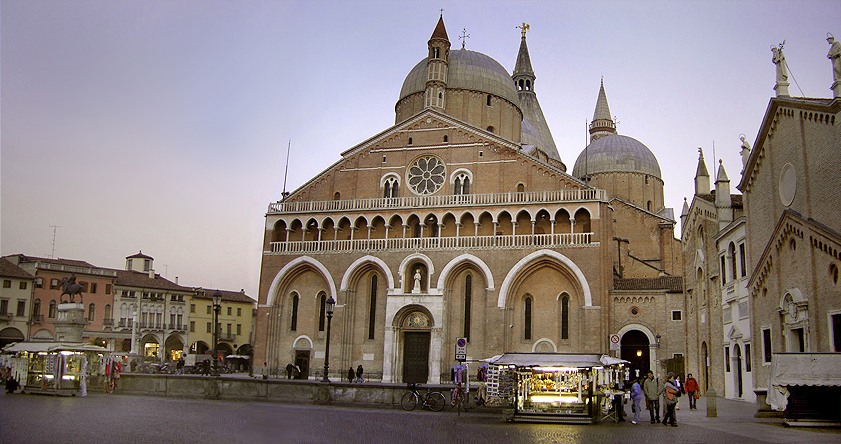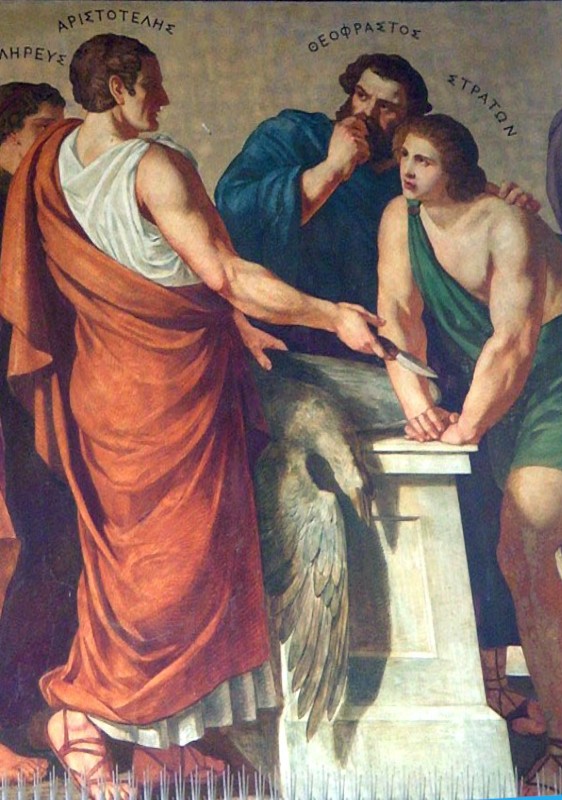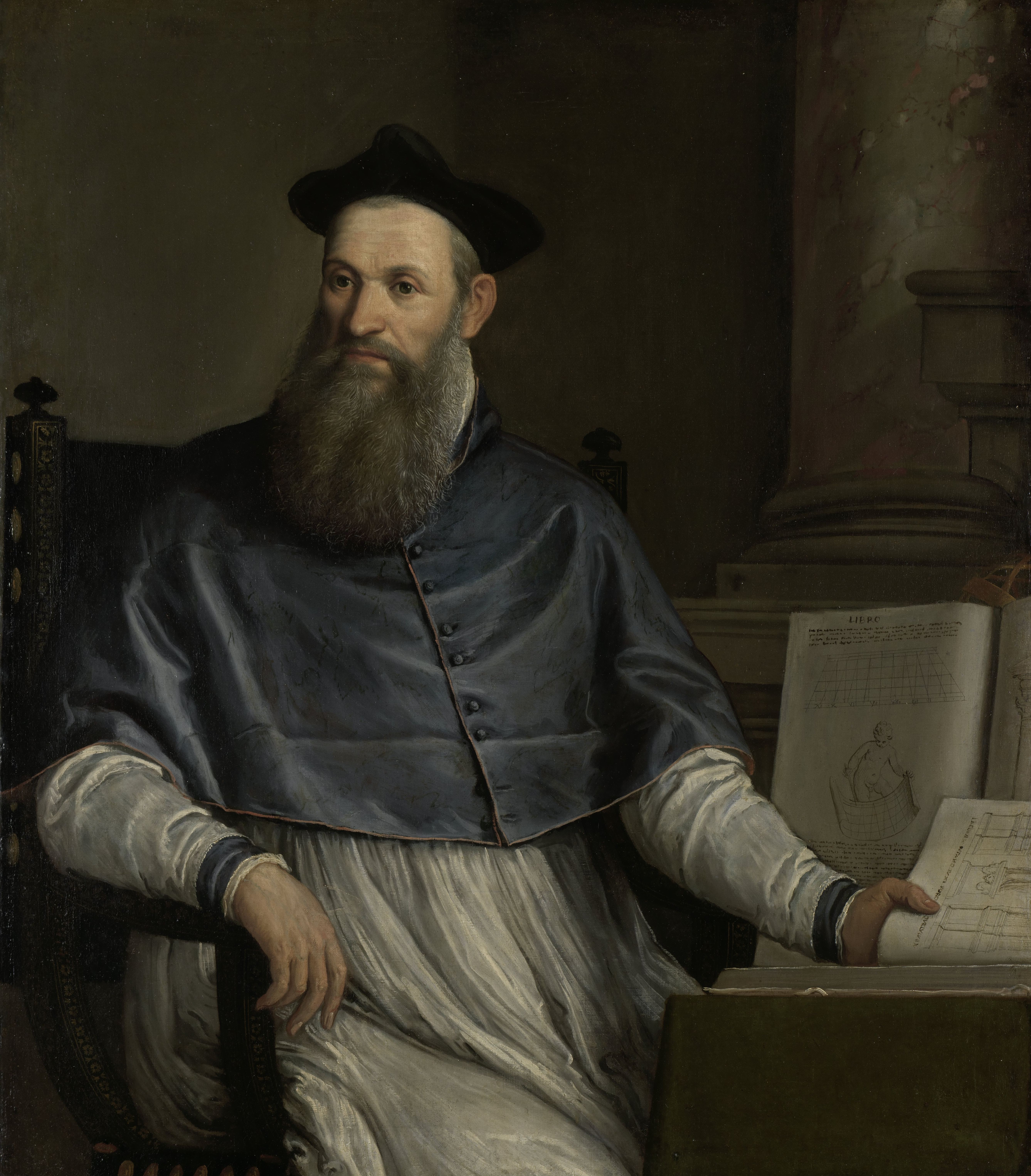|
Orto Botanico Di Padova
The Orto Botanico di Padova is a botanical garden in Padua, in the northeastern part of Italy. Founded in June 1545 by the Venetian Republic, it is the world's oldest academic botanical garden that is still in its original location. The garden – operated by the University of Padua and owned by the Italian government – encompasses roughly , and is known for its special collections and historical design. History The Garden of Padua was founded upon deliberation of the Senate of the Republic of Venice, Venetian Republic. It was devoted to the growth of medicinal plants, the so-called "simple plants" (''Orto dei semplici'' – simples were herbs that were used as they are rather than in admixtures) which produced natural remedies, and also to help students distinguish genuine medicinal plants from false ones to prevent misidentifications of plants, as this could lead to severe death and injury in patients. A circular wall enclosure was built to protect the garden from the freque ... [...More Info...] [...Related Items...] OR: [Wikipedia] [Google] [Baidu] |
Basilica Of Saint Anthony Of Padua
The Pontifical Basilica of Saint Anthony of Padua () is a Catholic Church, Catholic church and Basilicas in the Catholic Church, minor basilica in Padua, Veneto, Northern Italy, dedicated to Anthony of Padua, St. Anthony of Padua. Although the basilica is visited as a place of pilgrimage by people from all over the world, it is not the cathedral of the city, a title belonging to the Cathedral of Padua, Cathedral-Basilica of St. Mary of Padua. The basilica is known locally as "il Santo". It is one of the National shrine, national shrines recognized by the Holy See. Two chapels within the Basilica of Saint Anthony — the Cappella di San Giacomo and the Cappella del beato Luca Belludi — are included in the UNESCO World Heritage Site ''Padua's fourteenth-century fresco cycles'', inscribed in 2021. History Construction of the Basilica probably began around 1232, just one year after the death of St. Anthony of Padova, St. Anthony. It was completed in 1310 although several structu ... [...More Info...] [...Related Items...] OR: [Wikipedia] [Google] [Baidu] |
Pharmacology
Pharmacology is the science of drugs and medications, including a substance's origin, composition, pharmacokinetics, pharmacodynamics, therapeutic use, and toxicology. More specifically, it is the study of the interactions that occur between a living organism and chemicals that affect normal or abnormal biochemical function. If substances have medicinal properties, they are considered pharmaceuticals. The field encompasses drug composition and properties, functions, sources, synthesis and drug design, molecular and cellular mechanisms, organ/systems mechanisms, signal transduction/cellular communication, molecular diagnostics, interactions, chemical biology, therapy, and medical applications and antipathogenic capabilities. The two main areas of pharmacology are pharmacodynamics and pharmacokinetics. Pharmacodynamics studies the effects of a drug on biological systems, and pharmacokinetics studies the effects of biological systems on a drug. In broad terms, pharmacod ... [...More Info...] [...Related Items...] OR: [Wikipedia] [Google] [Baidu] |
Carrara Marble
Carrara marble, or Luna marble (''marmor lunense'') to the Romans, is a type of white or blue-grey marble popular for use in sculpture and building decor. It has been quarried since Roman times in the mountains just outside the city of Carrara in the province of Massa and Carrara in the Lunigiana, the northernmost tip of modern-day Tuscany, Italy. More marble has been extracted from the over 650 quarry sites near Carrara than from any other place. The pure white ''statuario'' grade was used for monumental sculpture, as "it has a high tensile strength, can take a high gloss polish and holds very fine detail".Kings History Carrara marble has been used since the time of Ancient Rome, when it was called ''marmor lunense'', or "Luni marble". In the Middle Ages, most of the quarries were owned by the Marquis Malaspina who in turn rented them to families of Carrara masters who managed both the extraction and transport of the precious material. Some of them, such as the Maffioli, who ... [...More Info...] [...Related Items...] OR: [Wikipedia] [Google] [Baidu] |
Antonio Bonazza
Antonio Bonazza (23 December 1698 – 12 January 1763) was an Italian sculptor of the Rococo. He is considered one the greatest and most original Venetian sculptors of the 18th century; his activity was widespread, and his art distinguished by its vivid and picturesque naturalism. Biography Early career Antonio was the son of Giovanni Bonazza, a prominent sculptor active in Padua (1654–1736), and member of a large family of sculptors. He may have been influenced by Orazio Marinali of Vicenza. He is first recorded working in collaboration with his father and brothers Tommaso and Francesco on the marble reliefs depicting the Adoration of the Shepherds (1730) and the Adoration of the Magi (1732) in the Cappella del Rosario of Santi Giovanni e Paolo, Venice, which are characterized by tender naturalistic detail. Later he produced the eight slightly rigid stucco Virtues (1741) in the Madonna Addolorata al Torresino, Padua, and the fourteen marble reliefs of the Stations of t ... [...More Info...] [...Related Items...] OR: [Wikipedia] [Google] [Baidu] |
Solomon
Solomon (), also called Jedidiah, was the fourth monarch of the Kingdom of Israel (united monarchy), Kingdom of Israel and Judah, according to the Hebrew Bible. The successor of his father David, he is described as having been the penultimate ruler of all Twelve Tribes of Israel under an amalgamated History of ancient Israel and Judah, Israel and Judah. The hypothesized dates of Solomon's reign are from 970 to 931 BCE. According to the biblical narrative, after Solomon's death, his son and successor Rehoboam adopted harsh policies towards the northern Israelites, who then rejected the reign of the Davidic line, House of David and sought Jeroboam as their king. In the aftermath of Jeroboam's Revolt, the Israelites were split between the Kingdom of Israel (Samaria), Kingdom of Israel in the north (Samaria) and the Kingdom of Judah in the south (Judea); the Bible depicts Rehoboam and the rest of Solomon's Patrilineality#In the Bible, patrilineal descendants ruling over independent ... [...More Info...] [...Related Items...] OR: [Wikipedia] [Google] [Baidu] |
Theophrastus
Theophrastus (; ; c. 371 – c. 287 BC) was an ancient Greek Philosophy, philosopher and Natural history, naturalist. A native of Eresos in Lesbos, he was Aristotle's close colleague and successor as head of the Lyceum (classical), Lyceum, the Peripatetic school, Peripatetic school of philosophy in Athens. Theophrastus wrote numerous treatises across all areas of philosophy, working to support, improve, expand, and develop Aristotelian system, the Aristotelian system. He made significant contributions to various fields, including ethics, metaphysics, botany, and natural history. Often considered the "father of botany" for his groundbreaking works "Historia Plantarum (Theophrastus), Enquiry into Plants" () and "On the Causes of Plants", () Theophrastus established the foundations of Botany, botanical science. His given name was (Ancient Greek: ); the nickname Theophrastus ("divine speaker") was reputedly given to him by Aristotle in recognition of his eloquent style. He came to ... [...More Info...] [...Related Items...] OR: [Wikipedia] [Google] [Baidu] |
Balustrade
A baluster () is an upright support, often a vertical moulded shaft, square, or lathe-turned form found in stairways, parapets, and other architectural features. In furniture construction it is known as a spindle. Common materials used in its construction are wood, stone, and less frequently metal and ceramic. A group of balusters supporting a guard railing, coping, or ornamental detail is known as a balustrade. The term baluster shaft is used to describe forms such as a candlestick, upright furniture support, and the stem of a brass chandelier. The term banister (also bannister) refers to a baluster or to the system of balusters and handrail of a stairway. It may be used to include its supporting structures, such as a supporting newel post. In the UK, there are different height requirements for domestic and commercial balustrades, as outlined in Approved Document K. Etymology According to the ''Oxford English Dictionary'', "baluster" is derived through the , from , from ' ... [...More Info...] [...Related Items...] OR: [Wikipedia] [Google] [Baidu] |
Acroterion
An acroterion, acroterium, (pl. akroteria) is an architectural ornament placed on a flat pedestal called the ''acroter'' or plinth, and mounted at the apex or corner of the pediment of a building in the classical style. An acroterion placed at the outer angles of the pediment is an ''acroterion angularium'' (' means ‘at the corners’). The acroterion may take a wide variety of forms, such as a statue, tripod, disc, urn, palmette or some other sculpted feature. Acroteria are also found in Gothic architecture. They are sometimes incorporated into furniture designs. Etymology The word comes from the Greek ' ( 'summit, extremity'), from the comparative form of the adjective ἄκρος, ("extreme", "endmost") + -τερος (comparative suffix) + -ιον (substantivizing neuter form of adjectival suffix -ιος). It was Latinized by the Romans as '. ''Acroteria'' is the plural of both the original Greek and the Latin form. According to Webb, during the Hellenistic perio ... [...More Info...] [...Related Items...] OR: [Wikipedia] [Google] [Baidu] |
Hydrophore (system)
{{disambig ...
A hydrophore may refer to: * , a system used in tall buildings and marine environments to maintain water pressure; see Water supply * Hydrophore (zoology), see Haleciidae See also * Hydraulic accumulator * Hydrophobe * Hydrophone A hydrophone () is a microphone designed for underwater use, for recording or listening to underwater sound. Most hydrophones contains a piezoelectric transducer that generates an electric potential when subjected to a pressure change, such as a ... [...More Info...] [...Related Items...] OR: [Wikipedia] [Google] [Baidu] |
Cardinal Points
The four cardinal directions or cardinal points are the four main compass directions: north (N), south (S), east (E), and west (W). The corresponding azimuths ( clockwise horizontal angle from north) are 0°, 90°, 180°, and 270°. The four ordinal directions or intercardinal directions are northeast (NE), southeast (SE), southwest (SW), and northwest (NW). The corresponding azimuths are 45°, 135°, 225°, and 315°. The intermediate direction of every pair of neighboring cardinal and intercardinal directions is called a secondary intercardinal direction. These eight shortest points in the compass rose shown to the right are: # West-northwest (WNW) # North-northwest (NNW) # North-northeast (NNE) # East-northeast (ENE) # East-southeast (ESE) # South-southeast (SSE) # South-southwest (SSW) # West-southwest (WSW) Points between the cardinal directions form the points of the compass. Arbitrary horizontal directions may be indicated by their azimuth angle value. Determination ... [...More Info...] [...Related Items...] OR: [Wikipedia] [Google] [Baidu] |
Vitruvius
Vitruvius ( ; ; –70 BC – after ) was a Roman architect and engineer during the 1st century BC, known for his multi-volume work titled . As the only treatise on architecture to survive from antiquity, it has been regarded since the Renaissance as the first book on architectural theory, as well as a major source on the canon of classical architecture. It is not clear to what extent his contemporaries regarded his book as original or important. He states that all buildings should have three attributes: , , and ("strength", "utility", and "beauty"), principles reflected in much Ancient Roman architecture. His discussion of perfect proportion in architecture and the human body led to the famous Renaissance drawing of the ''Vitruvian Man'' by Leonardo da Vinci. Little is known about Vitruvius' life, but by his own descriptionDe Arch. Book 1, preface. section 2. he served as an artilleryman, the third class of arms in the Roman military offices. He probably served as a senior of ... [...More Info...] [...Related Items...] OR: [Wikipedia] [Google] [Baidu] |
Daniele Barbaro
Daniele Matteo Alvise Barbaro (also Barbarus) (8 February 1514 – 13 April 1570) was an Italian cleric and diplomat. He was also an architect, writer on architecture, and translator of, and commentator on, Vitruvius. Barbaro's fame is chiefly due to his vast output in the arts, letters, and mathematics. A cultured humanist, he was a friend and admirer of Torquato Tasso, a patron of Andrea Palladio, and a student of Pietro Bembo. Francesco Sansovino considered Daniele to be one of the three best Venetian architects, along with Palladio and Francesco's father Jacopo. Biography He was born in Venice, the son of Francesco di Daniele Barbaro and Elena Pisani, daughter of the banker Alvise Pisani and Cecilia Giustinian. Barbaro studied philosophy, mathematics, and optics at the University of Padua. He has been credited with the design of the university's botanical garden. Barbaro served the Republic of Venice as ambassador to the court of Edward VI in London and as represen ... [...More Info...] [...Related Items...] OR: [Wikipedia] [Google] [Baidu] |







